 Make your CMS truly inclusive with All in One Accessibility®. This AI-powered widget seamlessly integrates with leading content management systems like WordPress, Drupal, Typo3, and Joomla to enhance accessibility without rebuilding your site. In minutes, you can activate over 70 assistive features—from voice navigation to AI-generated alt text—and ensure your content meets WCAG and EU accessibility standards while improving SEO and visitor satisfaction.
Make your CMS truly inclusive with All in One Accessibility®. This AI-powered widget seamlessly integrates with leading content management systems like WordPress, Drupal, Typo3, and Joomla to enhance accessibility without rebuilding your site. In minutes, you can activate over 70 assistive features—from voice navigation to AI-generated alt text—and ensure your content meets WCAG and EU accessibility standards while improving SEO and visitor satisfaction. Scrivito is a decoupled/headless enterprise web CMS that can serve as a flexible foundation for all your websites and apps. It delivers content to any channel and device, is user-friendly, secure, scalable and designed for high-performance global deployment.
Scrivito is a decoupled/headless enterprise web CMS that can serve as a flexible foundation for all your websites and apps. It delivers content to any channel and device, is user-friendly, secure, scalable and designed for high-performance global deployment.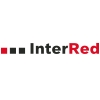 The multi channel publishing or crossmedia publishing of InterRed opens up entirely new possibilities for publishers, agencies and enterprises and meets the increasing requirements of the media industry.
The multi channel publishing or crossmedia publishing of InterRed opens up entirely new possibilities for publishers, agencies and enterprises and meets the increasing requirements of the media industry. PANSITE - the browser-based, powerful content management system supports the implementation of both complex websites and ambitious intranet projects. Get your content online quickly and easily and design your pages with ready-made special elements. Using the role and rights management, you can define who is allowed to edit which content and easily organize large projects with numerous editors.
PANSITE - the browser-based, powerful content management system supports the implementation of both complex websites and ambitious intranet projects. Get your content online quickly and easily and design your pages with ready-made special elements. Using the role and rights management, you can define who is allowed to edit which content and easily organize large projects with numerous editors.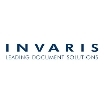 The goSmart® Customer Communication Management Suite supports the automated creation of documents from company data, the production of CI-compliant individual documents, and the management of physical and electronic output channels. It offers maximum compatibility through direct connection of interfaces. Enables intelligent output management with seamless export of documents for print, website or social media channels.
The goSmart® Customer Communication Management Suite supports the automated creation of documents from company data, the production of CI-compliant individual documents, and the management of physical and electronic output channels. It offers maximum compatibility through direct connection of interfaces. Enables intelligent output management with seamless export of documents for print, website or social media channels. HelpMatics™ is a particularly powerful service management solution for IT and other service departments. With its functionalities, the system provides efficient support for all service management processes. Thanks to simple administration, a particularly high level of user-friendliness and quick and easy implementation, the system can be used productively in a very short time.
HelpMatics™ is a particularly powerful service management solution for IT and other service departments. With its functionalities, the system provides efficient support for all service management processes. Thanks to simple administration, a particularly high level of user-friendliness and quick and easy implementation, the system can be used productively in a very short time. The expeedo e-commerce framework enables any number of store frontends on a central platform. You can offer your customers individual designs, functionalities, product ranges, languages, currencies and logistics systems. The software is multi-language and multi-currency capable. Dedicated evaluation options and many years of testing in online retailing make expeedo the system of choice for demanding store operators. Dynamic offer and shopping cart functions ensure smooth ordering processes.
The expeedo e-commerce framework enables any number of store frontends on a central platform. You can offer your customers individual designs, functionalities, product ranges, languages, currencies and logistics systems. The software is multi-language and multi-currency capable. Dedicated evaluation options and many years of testing in online retailing make expeedo the system of choice for demanding store operators. Dynamic offer and shopping cart functions ensure smooth ordering processes. MR.KNOW - FORMS ASSISTANT supports the creation of electronic forms for the administration and automation of business and administrative processes as well as the use as an output management solution. Connect your forms with process logics and use CSS editors as well as case-sensitive procedures for individual interfaces taking into account the corporate design specifications. Use a wizard with preview options for linking interfaces and processes. The MR.KNOW - FORMS ASSISTANT offers simple administration through central maintenance forms.
MR.KNOW - FORMS ASSISTANT supports the creation of electronic forms for the administration and automation of business and administrative processes as well as the use as an output management solution. Connect your forms with process logics and use CSS editors as well as case-sensitive procedures for individual interfaces taking into account the corporate design specifications. Use a wizard with preview options for linking interfaces and processes. The MR.KNOW - FORMS ASSISTANT offers simple administration through central maintenance forms. Screendrive offers a powerful cloud CMS for digital signage—featuring drag‑and‑drop layout tools, precise playlist scheduling, and robust user permissions. Ideal for businesses aiming for versatile, centrally managed screen content.
Screendrive offers a powerful cloud CMS for digital signage—featuring drag‑and‑drop layout tools, precise playlist scheduling, and robust user permissions. Ideal for businesses aiming for versatile, centrally managed screen content. L Squared offers a powerful cloud digital signage system with rapid deployment, real-time data integration, and rich user access control. Its CMS supports screens, tablets, and kiosks across sectors like retail, healthcare, and education - scaling from single sites to global networks.
L Squared offers a powerful cloud digital signage system with rapid deployment, real-time data integration, and rich user access control. Its CMS supports screens, tablets, and kiosks across sectors like retail, healthcare, and education - scaling from single sites to global networks. Mvix offers a cloud-based digital signage solution compatible with Windows, Linux, and Chrome OS. It provides a lifetime software license, dynamic content integrations, and remote management, ideal for scalable deployments without recurring fees.
Mvix offers a cloud-based digital signage solution compatible with Windows, Linux, and Chrome OS. It provides a lifetime software license, dynamic content integrations, and remote management, ideal for scalable deployments without recurring fees.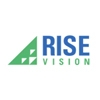 Rise Vision is a cloud-based digital signage solution compatible with Windows, macOS, Linux, Android, iOS, and Chrome OS. It offers centralized content management, real-time updates, and customizable templates, enhancing business communication.
Rise Vision is a cloud-based digital signage solution compatible with Windows, macOS, Linux, Android, iOS, and Chrome OS. It offers centralized content management, real-time updates, and customizable templates, enhancing business communication. Drupal is a multiple award-winning open source content management system (CMS) that allows you to create and manage powerful websites. It can handle virtually anything from web business cards and blog pages to corporate websites with online stores and full-featured intranet solutions ...
Drupal is a multiple award-winning open source content management system (CMS) that allows you to create and manage powerful websites. It can handle virtually anything from web business cards and blog pages to corporate websites with online stores and full-featured intranet solutions ... Worldwide, WordPress is used for about 42% of all websites. WordPress serves bloggers, startups and small business owners as well as global corporations. The open source WordPress content management system requires no programming knowledge ...
Worldwide, WordPress is used for about 42% of all websites. WordPress serves bloggers, startups and small business owners as well as global corporations. The open source WordPress content management system requires no programming knowledge ... REACH offers a cloud-based digital signage CMS compatible with Windows and Linux. It enables centralized content creation, scheduling, and monitoring across multiple displays, providing scalability and real-time updates.
REACH offers a cloud-based digital signage CMS compatible with Windows and Linux. It enables centralized content creation, scheduling, and monitoring across multiple displays, providing scalability and real-time updates.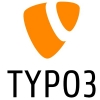 TYPO3 is a powerful, flexible and scalable open source content management system (CMS) used for millions of websites worldwide. With TYPO3 you can easily create and manage your business website without any programming knowledge to create a user-friendly and professional online presence for your company ...
TYPO3 is a powerful, flexible and scalable open source content management system (CMS) used for millions of websites worldwide. With TYPO3 you can easily create and manage your business website without any programming knowledge to create a user-friendly and professional online presence for your company ...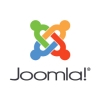 What is Joomla! Joomla! is a powerful open-source content management system (CMS) that allows users to easily create and manage websites. Joomla! has been one of the most popular CMS platforms for years and is used by millions of websites around the world ...
What is Joomla! Joomla! is a powerful open-source content management system (CMS) that allows users to easily create and manage websites. Joomla! has been one of the most popular CMS platforms for years and is used by millions of websites around the world ...